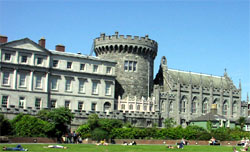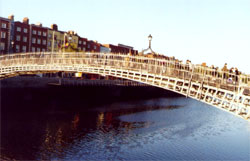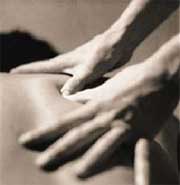|
|
|
|
Top Ireland Destinations:
Dublin hotels Cork hotels Galway hotels Killarney hotels Limerick hotels See more hotels in Ireland
World Destinations:
 Guides » Ireland » Fun and Loving Ireland Guides » Ireland » Fun and Loving IrelandFun and Loving Ireland
Every year, people around the world celebrate St. Patrick’s Day, whether Irish or not. Ireland, the country from where these celebrations stemmed is truly an unforgettable place. The landscape is nothing less than mystical and the culture, a unique legend of fairies and leprechauns.
Although Ireland tends to be a damp country, this moisture promises a land of every possible shade of green, which is why people call Ireland Emerald Isle. Today, Ireland is home to some 5.2 million people with 3.6 million of those in Ireland and 1.6 million in Northern Ireland. While Ireland like most countries has had her share of troubles, specifically in the north, today we see a country that is peaceful and full of people who prefer the gentler side of life.  As a member of the European Union, and with many cities now boasting high-tech companies, we can see that the country is thriving and a magnificent paradise. Therefore, if you are trying to plan your next vacation and have Europe in your sights, we highly recommend you consider Ireland! As a member of the European Union, and with many cities now boasting high-tech companies, we can see that the country is thriving and a magnificent paradise. Therefore, if you are trying to plan your next vacation and have Europe in your sights, we highly recommend you consider Ireland!
During the Iron Age, the Celts came to Ireland from Eastern Europe, estimated around 300 BC. For more than 1,000 years, the Celts controlled the land, leaving a wonderful legacy of culture and language that is still seen throughout the country today. Although the Romans had reached areas all around Ireland, they never reached this particular country. For that reason, when most of Europe fell hard during the Dark Ages after the fall of the empire, Ireland came out virtually unscathed. In fact, Ireland became the place where many European civilizations came to rebuild, primarily during the 3rd, 4th, and 5th centuries after the Christians came. Then around the 8th century, Vikings started to steal from the various monasteries, settling in the country during the 9th century. With this, they formed strong alliances with the chieftains and natives. Soon, the city of Dublin, now the country’s capital was founded in the 10th century, although at that time, small. Because of this, when the English came to Ireland in 1169, they had little trouble taking Dublin along with Wexford under their control. Interestingly, the king, Henry II, was recognized by the pope as being the lord of Ireland so when he took Waterford over as well in 1171, it was declared a royal city. Moving to the 17th century, all of the English power was grouped under Henry VIII and Elizabeth I. However, the earl of Tyrone named Hugh O’Neill left the country in 1607, taking with him 90 other chiefs. With this, the city of Ulster was left without any leadership, setting it up for colonization, at that time called “plantation” whereby the land was confiscated and settlers were taught how to sow seeds for the division of Ulster, which still exists. At this time, several bloody battles broke out and in 1695, strict penal laws were established and enforced, called the popery code. Under these new laws, the Catholics were not allowed to buy land, raise their children as Catholics, or enter the forces of the law. In addition, Irish music, education, and culture were banned. This led to covert masses and outdoor school being held illegally, known as Hedge Schools. The devastation was so intense that by 1778, just 5% of the land was owned by Catholics. As you can imagine, this unrest greatly concerned the Protestants, pushing them to trade what independence they had left for British security. With that, Ireland was united politically with Britain in the 18th century under what we know as the “1800 Act of Union”. Although Ireland would go through additional difficult times, this was a turning point for the country, at least temporarily stopping the tragedy of the Great Famine from 1845 to 1851. Moving to the 20th century, the country of Ireland went through the Easter Rising in Dublin fighting for independence, the Anglo-Irish war that led to the Anglo-Irish Treaty of 1921 whereby 26 Irish countries received independence, and the declaration as a republic in 1948, leaving the British Commonwealth in 1949. Sadly, Ireland and Northern Ireland were faced with various challenges from that time but in the late 20th century, the economy was flourishing with new jobs growing. What we see now are many young people choosing to stay in Ireland or returning from foreign jobs. Unfortunately, Ireland is an expensive country for living and tourism. As an example, while you could buy a modest two-bedroom home in the United States for $100,000 to $250,000, in Dublin, you will pay $1 million or more! Keep in mind that while traveling to this country, there are many beautiful places to stay and places to see that are very affordable so do not allow that to dissuade you from visiting. While Ireland has a number of cultures to include music and art, without doubt, literature is its strongest point. Libraries around the world are filled with magnificent literature from people such as George Bernard Shaw, Oscar Wilde, Samuel Beckett, James Joyce, and others. In fact, James Joyce is considered the most significant writer of literature of the 20th century! Because of the beauty of the land, you will also discover that many famous movies were filmed in various regions of Ireland. For instance, Far & Away, The Dead, Circle of Friends, The Crying Game, and the Commitments were all made in this magnificent country. At night, it is common to find places where traditional Irish folk music is played, typically with a tin whistle, goatskin drum, pipes, and of course, the fiddle. To go along with the music are plenty of pubs in every niche of Ireland where beer is the favorite drink. The language of Ireland is primarily English but if you have ever heard someone from Ireland speak, then you know he or she has a peculiar way of creating sentences. The spoken word is charming, and often mimicked but rarely achieved. The food in Ireland is succulent, usually consisting of lamb, pork, and beef. Most meals include bread in the form of scones, which are delicious. Other traditional dishes enjoyed by all include bacon and cabbage, Barm Brack, which is cake-like bread, and Boxty, wonderful filled pancakes. While people in Ireland eat breakfast, lunch, and supper, lunch is the main meal, usually washed down by black gold (Guinness beer) or a hot cup of Irish coffee. The majority of the country is elevated ground, nestled near the coast. This island in the Atlantic Ocean is just 50 miles east of Britain but stretches out more than 300 miles to the north and south and then another 186 miles to the east and west. You will immediately notice gorgeous flora. If you are lucky, when looking out over the hillsides, you might see a faint, irregular line, which are potato ridges called lazy beds. Unfortunately, just 1% of the land features native oak forests although you will find plantation pine. Wildlife is varied, including shrew, bats, the red deer, hedgehogs, fox, squirrels, otters, pine martens, and so on. When visiting Ireland, you will find the summers to be ideal. These months have temperatures averaging 85 degrees but remember, it rains often in this country so be prepared. As you can imagine, the greener the area the more rain it receives. In fact, if you take a trip around Kerry, you will find it rains 270 days out of the year. The winter months drop below freezing, not very comfortable. To explore Europe, we suggest you add Ireland to your list of destinations. It is truly a magical trip, one well worth taking. Last Updated: 10/19/2006 3:14:00 PM Mode articles for Ireland Throughout Ireland, you will find one city after another filled with incredible culture, amazing countryside, and some of the friendliest people on the planet. Even so, each city, town,
Throughout Ireland, you will find one city after another filled with incredible culture, amazing countryside, and some of the friendliest people on the planet. Even so, each city, town,... continue >>  When traveling to Dublin, Ireland, you will discover a unique land that is peaceful with a touch of excitement. Although many of the cities are laidback, Dublin also celebrates life, which is seen in the many festivals
When traveling to Dublin, Ireland, you will discover a unique land that is peaceful with a touch of excitement. Although many of the cities are laidback, Dublin also celebrates life, which is seen in the many festivals ... continue >>  One of the reasons people visit the country of Ireland is because it is so beautiful and relaxing. Although there are some areas of Ireland that offer cosmopolitan lifestyle, most cities are laidback and peaceful. In
One of the reasons people visit the country of Ireland is because it is so beautiful and relaxing. Although there are some areas of Ireland that offer cosmopolitan lifestyle, most cities are laidback and peaceful. In ... continue >> |
|
| | |
|
©2025 HotelsRu.com About us Privacy Site map Fun and Loving Ireland |
|
 Look for deals on hotels?
Look for deals on hotels?